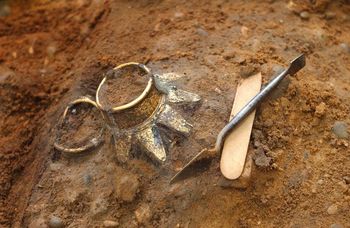Metadata for CAD assets
As discussed, it is important to contact the proposed digital archive at the outset of a project and to discuss requirements for making a deposit. Some digital archives may prepare the metadata with the assistance of project personnel whereas others expect the data provider to provide the basic metadata. Digital Antiquity, for example, provides online tools so that data providers may create metadata at the time that they submit their files.
The metadata recommended for documenting CAD data can be found in Section 4 of this guide, specifically:
- Project Documentation – project level metadata, also used for resource discovery.
- Documenting the Conventions – metadata and documentation for conventions used in the dataset.
- Data collection documentation, either or both of:
- Documenting CAD Models – model-level documentation.
Access and re-use
There is potentially a diverse audience for CAD models. Professionals, academics and researchers may want to find information about the results from previous projects. Another use for CAD models is by teaching professionals to support courses delivered in university departments and schools. Despite these potential uses, the Survey of Archaeological Archives (Swain 1998, 43-45) concluded that museum archives in general are a grossly under-utilised resource.
The Dublin core
The Archaeology Data Service, along with a growing number of organisations around the world, advocates use of the Dublin Core for recording the basic information that helps potential users to find and evaluate your data. This has been developed by an international consortium of academic and professional groups and provides a standard for the most basic metadata required.
The Dublin Core has evolved to become a series of fifteen broad categories, or elements. Each of these elements is optional, may be repeated as many times as required, and may be refined through the use of a developing set of sub-elements. The use of the Dublin Core within the Archaeology Data Service is discussed further elsewhere (Miller and Greenstein 1997; Wise and Miller 1997), and the current element definitions laid down across the Dublin Core community are available on the web.
The metadata that is used in Internet gateways and search engines can be derived from the project documentation and model level documentation that is prepared for deposit with a digital archive. This documentation may be made available at different levels through the various gateways and search engines. For example, the metadata that is made available through ArchSearch (the ADS online catalogue) is based on the Dublin Core. Other gateways may make a reduced set of metadata available, or add additional descriptive elements.



